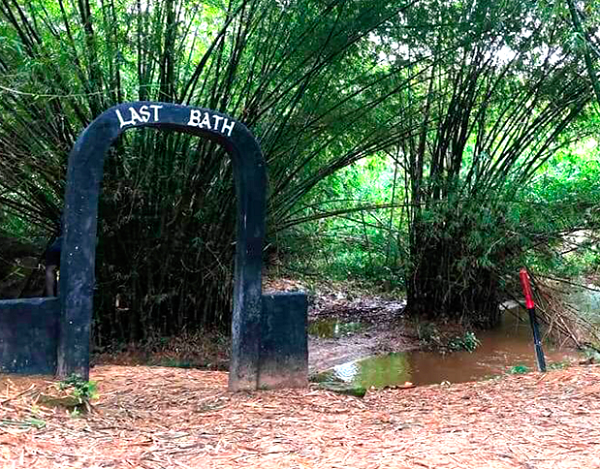Akatekyi Crocodile Pond: A Place...
September 29, 2025
At the heart of this historical site lies the Assin Manso Slave River, locally known as Donkor Nsuo, where enslaved individuals from northern Ghana and neighbouring regions had their final bath before being transported to the slave castles along the coast. This article delves into the detailed components of Assin Manso, shedding light on its historical significance and the cultural ceremonies that take place at this poignant location.
The Slave Journey and Last Bath
The journey of the slaves from areas like Salaga, Pikwroro, and Saakplii took them through the Bono and Nkoranza regions to Kumasi, the capital of the Ashanti Kingdom. From there, they turned eastwards towards the Central Region, making their way to Assin Praso and eventually Assin Manso. It was at Assin Manso where the enslaved individuals took a much-needed rest, were sorted out, branded, and then had their "last bath" before being transported to the slave castles.

Cultural Ceremonies and Symbolism
Assin Manso holds immense symbolism for many individuals seeking to trace their roots back to the African continent. A ceremony is conducted at the Slave River, where returnees are bathed in its waters, symbolizing their first bath upon returning to their ancestral homeland. They are then dressed in white garments and adorned with Yeyaa spiritual leaves. Libations are poured, and the returnees are received at the palace by traditional chiefs. A naming ceremony follows, where they are given local traditional names, embracing their African heritage.
Historical Remains and Memorial Wall of Return
Within Assin Manso, the facility preserves the remains of three Africans who died in the diaspora and were repatriated. Additionally, the Memorial Wall of Return stands as a testament to those who fought for the emancipation of Africans. Portraits of these freedom fighters are displayed on the wall. The site also features a video room, allowing visitors to watch documentaries on the slave trade. Furthermore, it serves as a chapel where patrons can pray and commune with their ancestors.

Assin Manso in the African Diasporic Historical Imagination
Assin Manso regained prominence in 1998 when it witnessed the reburial of two slave ancestors, one from Jamaica and one from the United States, during an Emancipation Day ceremony. In recent years, the site has grown in popularity due to the Year of Return campaign organized by the Ghana Tourism Authority and the Government of Ghana. Visitors can engage in a transformative experience by removing their shoes and walking barefoot along a path leading to the muddy river, where they place their hands in the water and offer prayers as an expression of gratitude for the opportunity to reconnect with their ancestral roots.
Assin Manso stands as a crucial link in the trans-Atlantic slave trade route, serving as a gathering point for enslaved individuals from various regions of Ghana. Its historical significance, cultural ceremonies, and preserved remains make it an essential destination for those seeking to understand the profound impact of the slave trade on African history and heritage. As Assin Manso gains recognition and popularity, it serves as a poignant reminder of the resilience and strength of the African people and their journey toward healing and reconciliation.
September 29, 2025
September 29, 2025
September 26, 2025
September 18, 2025
September 18, 2025
September 4, 2025
September 3, 2025
August 28, 2025
August 19, 2025
August 8, 2025